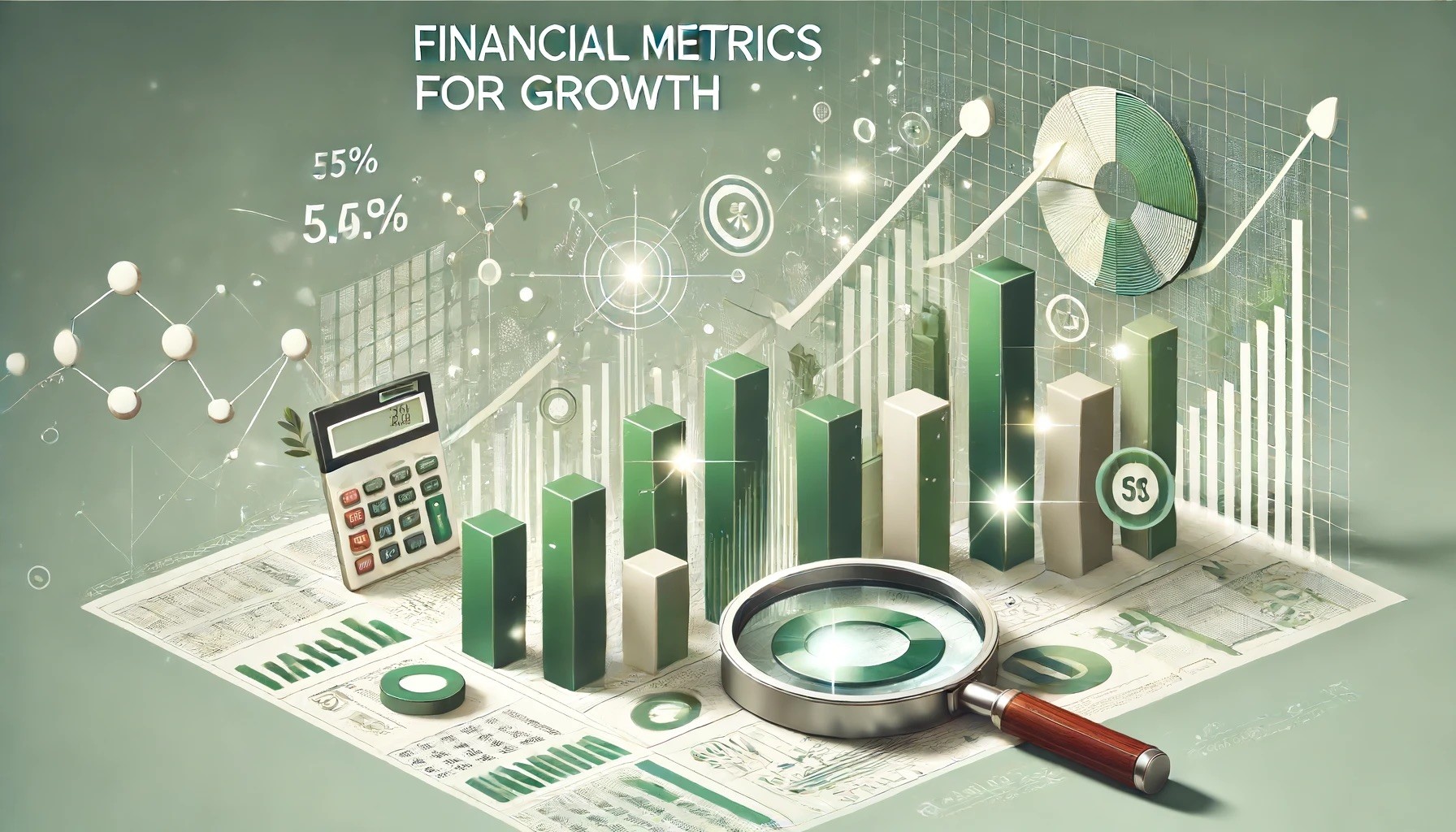In the competitive landscape of modern business, understanding and leveraging key financial metrics is crucial for driving growth and ensuring long-term success. Financial metrics are quantifiable measures that provide valuable insights into a company's financial performance, health, and efficiency. By monitoring and analyzing these metrics, business leaders can make informed decisions, identify areas for improvement, and develop strategies to achieve their goals. This blog post explores some essential financial metrics and how they can be used to propel your business forward.
Key Financial Metrics to Monitor
1. Profitability Metrics
Gross Profit Margin
Definition: The gross profit margin measures the percentage of revenue that exceeds the cost of goods sold (COGS). It indicates how efficiently a company produces its goods or services.
Interpretation: A higher gross profit margin suggests better efficiency in production and cost control. Generally, a gross profit margin above 50% is considered good, but this varies by industry.
Net Profit Margin
Definition: The net profit margin shows the percentage of revenue that remains as profit after all expenses have been deducted.
Interpretation: A higher net profit margin indicates better overall profitability. A net profit margin of 10% or more is generally considered good, but this varies by industry.
2. Liquidity Metrics
Current Ratio
Definition: The current ratio assesses a company's ability to meet its short-term obligations with its current assets.
Interpretation: A current ratio above 1 indicates good short-term financial health, as the company has sufficient current assets to cover its current liabilities.
3. Leverage Metrics
Debt-to-Equity Ratio
Definition: This ratio compares a company's total debt to its shareholder equity, indicating the proportion of debt financing relative to equity financing.
Interpretation: A lower debt-to-equity ratio suggests a more stable financial structure. A ratio below 1 is generally considered good, as it indicates that the company has more equity than debt.
4. Efficiency Metrics
Return on Assets (ROA)
Definition: ROA measures how effectively a company utilizes its assets to generate profit.
Interpretation: A higher ROA indicates efficient asset utilization. An ROA of 5% or more is generally considered good, but this varies by industry.
5. Customer Metrics
Customer Acquisition Cost (CAC)
Definition: CAC measures the cost associated with acquiring a new customer.
Interpretation: A lower CAC relative to the lifetime value of a customer indicates effective and efficient customer acquisition strategies.
Customer Lifetime Value (CLTV)
Definition: CLTV estimates the total revenue a business can expect from a single customer over the entire duration of their relationship.
Interpretation: A higher CLTV suggests that customers are valuable to the business over the long term. Ideally, CLTV should be significantly higher than CAC.
Leveraging Financial Metrics for Business Growth
1. Informed Decision Making
Regularly monitoring these key financial metrics provides a comprehensive view of your business's financial health. Use these insights to make informed decisions about budgeting, investments, and resource allocation.
2. Identifying Growth Opportunities
Analyzing trends in financial metrics can help identify areas with potential for growth. For instance, improving gross profit margins may indicate opportunities for cost reduction or price adjustments.
Real-world example: A manufacturing company noticed a decline in its gross profit margin. By analyzing its production processes and cost structure, the company identified areas for improvement and implemented cost-saving measures, leading to an increase in profitability.
3. Enhancing Operational Efficiency
Metrics such as ROA and net profit margin highlight areas where operational efficiency can be improved. Focus on optimizing processes, reducing waste, and improving asset utilization to boost overall performance.
Real-world example: A retail chain observed a low ROA compared to industry benchmarks. By examining its inventory management and supply chain processes, the company streamlined operations, reduced inventory holding costs, and improved its ROA.
4. Strategic Planning
Use financial metrics to set realistic goals and benchmarks. Strategic planning based on solid financial data ensures that your business objectives are achievable and aligned with your financial capacity.
Real-world example: A technology startup used its financial metrics to develop a five-year strategic plan. By setting targets for revenue growth, profitability, and customer acquisition, the company was able to allocate resources effectively and secure funding from investors.
5. Risk Management
Monitoring metrics like the current ratio and debt-to-equity ratio helps manage financial risks. Ensure liquidity to meet short-term obligations and maintain a balanced approach to debt financing.
Real-world example: A construction company closely monitored its current ratio to ensure it had sufficient liquidity to cover its short-term liabilities. By maintaining a healthy current ratio, the company was able to navigate seasonal fluctuations in cash flow and avoid financial distress.
6. Customer-Centric Strategies
Leverage CAC and CLTV to refine your marketing strategies and enhance customer retention. Focus on acquiring high-value customers and increasing the lifetime value of existing ones through personalized experiences and loyalty programs.
Real-world example: An e-commerce company analyzed its CAC and CLTV data to identify its most profitable customer segments. By targeting these segments with personalized marketing campaigns and retention strategies, the company significantly increased its CLTV and overall profitability.
The Importance of Continuous Monitoring and Analysis
Understanding and leveraging key financial metrics is essential for driving business growth and ensuring long-term success. However, it is crucial to recognize that these metrics should not be viewed in isolation. They are interconnected and provide a comprehensive picture of your business's financial health when analyzed together.
Regular monitoring and analysis of these metrics allow you to identify trends, spot potential issues, and make proactive decisions. Establishing a system for tracking and reporting on these metrics will enable you to stay informed and agile in your decision-making process.
By embracing these financial insights and incorporating them into your strategic planning, you can optimize operations, identify growth opportunities, and manage risks effectively. Continuously monitoring and leveraging key financial metrics will empower you to make data-driven decisions that propel your business forward and pave the way for sustained success.
June 12, 2024
June 11, 2024
June 10, 2024




